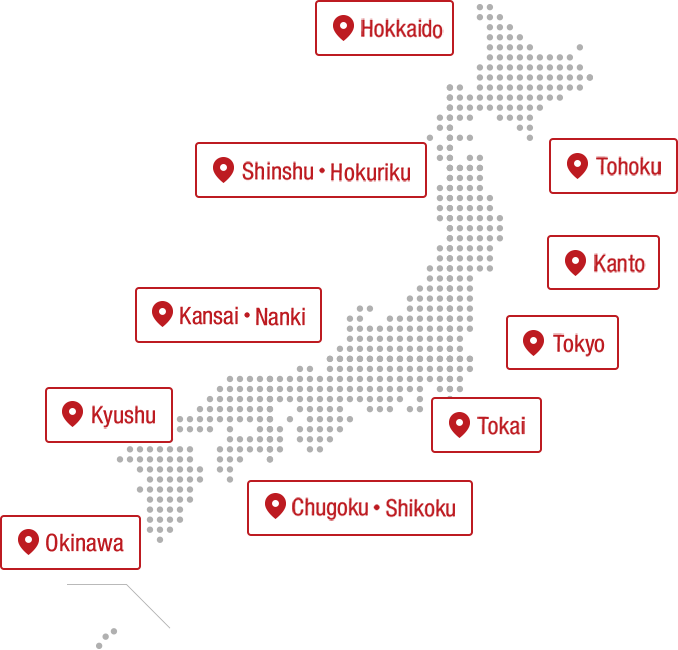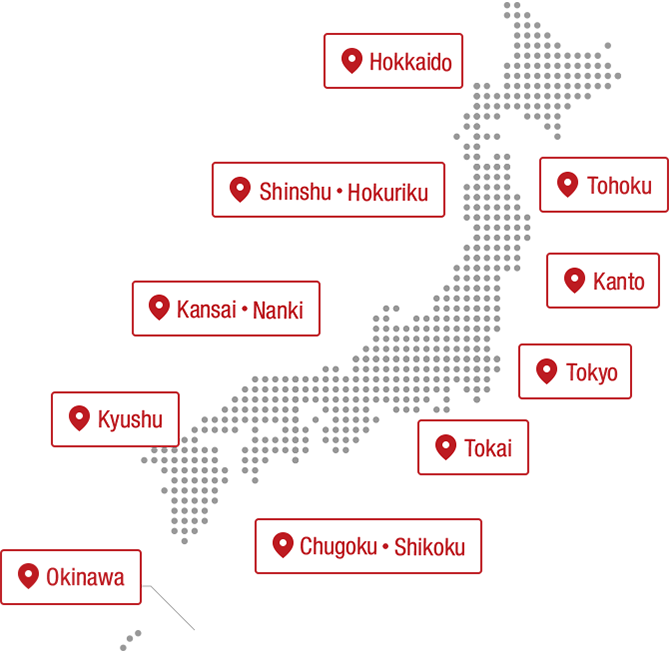One of them is the "Extremadura region." Located on the "Silver Route," a trade route that connected northern and southern Spain and was built before Christ, it has developed as a key transportation hub since ancient times. We will introduce the charms of this "unknown Spain," where many ancient Roman and medieval historical sites still remain, in four points.
*Based on the rate in May 2025.
INDEX
- Extremadura, Spain
- Attraction 1: Travel back in time to two eras, ancient and medieval, at World Heritage sites
- Attraction 2: A wide variety of delicacies that make use of the local bounty, such as prosciutto and wine
- Attraction 3: Magnificent, untouched nature and stunning scenery
- Attraction 4: A souvenir and memory! Experience making a "traditional hat"
- Discover the hidden charm of Extremadura
Extremadura, Spain

The charm of Extremadura, located in the southwest of Spain, is undoubtedly its three World Heritage Sites. The state capital, Merida, is a city filled with Roman ruins, and seven historical buildings, including the Amphitheatre and the Roman Theatre, are registered as "Archaeological Sites."
On the other hand, the old town of Cáceres, which is an hour by train from Merida, is from a different era and retains a strong medieval atmosphere.

Extremadura is also famous for its Iberian pork, so you can enjoy some gourmet food there too!
You can get to the state capital, Mérida, by long-distance train from Madrid's Atocha Station or by long-distance bus from the South Bus Station, which takes about 4 to 6 hours.
Related article
Attraction 1: Travel back in time to two eras, ancient and medieval, at World Heritage sites
The archaeological ruins of the state capital of Mérida are, as the name suggests, ruins from the ancient Roman era. Meanwhile, the old town of Cáceres retains traces of the Middle Ages. One of the charms of Extremadura is the possibility of traveling back in time to two different eras.
The capital of the state, Merida, is reminiscent of the Roman Empire
Merida was founded in 25 BC as the capital of the Roman province of Lusitania. As it is called "Little Rome", ruins are scattered all over the city.

The two must-see attractions are the Amphitheatre and the Roman Theater. Built in 8 BC, the Amphitheatre was used for gladiator and animal fights, and was an impressive venue for the time, with a capacity of 15,000 people.

Next door is the Roman Theater, built between 16 and 15 BC under the patronage of Emperor Augustus' son-in-law Agrippa. The theater is characterized by 32 marble columns at the back of the stage that resemble a temple, and was where theater performances were held at the time. It can accommodate 6,000 spectators, but is still in use today, more than 2,000 years later. Every summer, the Mérida International Classical Theater Festival is held here, allowing you to experience exceptional classical theater in a place full of history.
Roman Amphitheatre and Roman Theatre
| address | : | Plaza Margarita Xirgú, s/n 06800 Mérida, Badajoz |
|---|---|---|
| phone | : | +34 924 330 722 |
| business hours | : | October 1st to March 31st, 9:00am to 6:30pm every day April 1st to September 30th, 9:00am to 9:00pm every day |
| Closed Day | : | 12 euros (approximately 1,970 yen in Japanese yen) |
| web | : | Amphitheatre official website (foreign language site) Roman Theatre Official Website (foreign language site) |
After marveling at the ancient ruins, head to the National Museum of Roman Art, located near the Amphitheatre and Roman Theatre, where you'll find an impressive collection of coins, sculptures, paintings, ceramics, mosaics and other decorative arts excavated in Mérida.
National Museum of Roman Art
| address | : | C/ José Ramón Mélida, s/n, 06800 Mérida, Badajoz |
|---|---|---|
| phone | : | +34 924 311 690 |
| business hours | : | October 1st to March 31st Tuesday to Saturday 9:30am to 6:30pm, Sunday 10am to 3pm April 1st - September 30th Tuesday - Saturday 9:30 - 20:00, Sunday 10:00 - 15:00 |
| Fee | : | 3 euros (approximately 490 yen in Japanese yen) * Currently free due to construction. Completion date is undecided. |
| web | : | National Museum of Roman Art (foreign language site) |
"Cáceres" takes you back to the Middle Ages
Located about 70km north of the state capital of Merida, and an hour by train, Cáceres is a medium-sized city with a population of 100,000. It is a city packed with sights, including the third largest group of historical sites in Europe. The charm of this city is that it still retains its medieval buildings and streetscape. Its beauty has earned it the nickname "the jewel of Extremadura."
The city centre is Plaza Mayor, which lies just outside the city walls.
Enter the old town through the Star Gate, which can be reached by climbing a flight of stairs.

It overlooks the outside of the castle walls and offers a pleasant view.
Just to the left of the gate is the Bujaco Tower. This tower, part of the castle wall, was built at the end of the 12th century and is about 25 meters high. If you climb to the top, you can get a panoramic view of the city.
The Tower of Bujaco
| address | : | Plaza Mayor, s/n, 10003, Caceres |
|---|---|---|
| phone | : | +34 927 24 67 89 |
| business hours | : | Winter hours: Tuesday to Sunday 10:00-14:00, 16:00-19:30 Summer hours: Tuesday to Sunday 10:00-14:00, 17:30-20:30 |
| Fee | : | 2.5 euros (approximately 410 yen in Japanese yen) |
| web | : | Bujaco Tower (foreign language site) |
Another highlight of the city is the Helga de Alvear Museum of Contemporary Art. Opened in 2021, the museum houses and exhibits over 3,000 works by contemporary artists.

Ai Weiwei's "Descending Light"
One of the most eye-catching exhibits in the museum is the work of Ai Weiwei, a contemporary Chinese artist and activist.

First edition of "Los Caprichos"
Also on display are the first editions of all 80 prints from Goya's Los Caprichos series, which he produced between 1797 and 1799. Another unique feature of this city is that you can enjoy modern art amidst its medieval streets.
Helga de Alvear Museum of Contemporary Art
| address | : | Pizarro 10 - 10003 Cáceres |
|---|---|---|
| phone | : | +34 927 626 414 |
| business hours | : | October 1st - May 31st Tuesday - Saturday 10:00-14:00, 17:00-20:00, Sunday 10:00-14:30 June 1st - September 30th Tuesday - Saturday 10:00-14:00, 18:00-21:00, Sunday 10:00-14:30 |
| Fee | : | free |
| web | : | Helga de Alvear Contemporary Art Museum (foreign language site) |
Plasencia, the city with a unique cathedral
Plasencia is a city with a population of about 40,000 located about 70 km north-northeast of Cáceres. It was founded in 1186 by King Alfonso VIII.

The main attraction is the Plasencia Cathedral.


It consists of two buildings: the old cathedral, construction of which began in the 13th century, and the new cathedral, construction of which began in the 15th century. It is a unique building that combines Romanesque, Gothic, Renaissance, and Baroque styles.
Plasencia Cathedral
| address | : | Plz. Catedral, 1 – 10600 Plasencia, Cáceres |
|---|---|---|
| phone | : | +34 927 424 406 |
| business hours | : | Tuesday to Thursday 10:30 to 14:00, 17:00 to 20:00 Friday 10:30-14:00, 17:00-20:30 Saturday 10:30-20:30, Sunday 10:30-16:00 |
| Fee | : | 8 euros (approximately 1,310 yen in Japanese yen) |
| web | : | Plasencia Cathedral (Foreign Language Site) |
By the way, if you happen to be in town on a Tuesday, don't miss the "Tuesday Market," which is held every week from around 8am. This lively morning market has been going on for 800 years, and is lined with local specialties such as chorizo and prosciutto.
Attraction 2: A wide variety of delicacies that make use of the local bounty, such as prosciutto and wine
One of the best parts of traveling to Spain is the food. Extremadura is no exception, with an abundance of fresh vegetables and fruits, including tomatoes, cherries, figs, and of course prosciutto and cheese. In recent years, wine and Cava (Spanish sparkling wine brewed using the Champagne method) have also been gaining attention. We will introduce the gourmet food of Extremadura.
Enjoy the finest "Jamon Iberico" locally!
Did you know that high-quality prosciutto can only be produced in high-altitude, dry regions? Extremadura is one of the regions best suited to producing such high-quality prosciutto.

Montanchez, a village of about 1,600 people in the province of Cáceres, is famous for Iberian ham. The "Jamon de Montanchez" (Montanchez ham) is considered a representative product of Spain. The ham workshop "Jamones Alvaro Galan", loved by the locals in this village, ships 2,500 to 3,000 hams a year.

There are four categories of Iberian ham, the most expensive being "Bellota," made from 100% Iberian pigs raised on a diet of only acorns. The price of one pig leg sold here is an ultra-luxury item, costing an astounding 320 euros (approximately 52,500 yen in Japanese yen, depending on weight). They also sell it in small portions, so be sure to try it when you're there.
Jamones Alvaro Galán
| address | : | Calle Obispo Senso 26 – 27 10170 Montánchez Cáceres |
|---|---|---|
| phone | : | +34 927 380 172 |
| business hours | : | Monday to Friday 7:00-15:00, 16:00-19:00 Saturday 10:00-14:00 |
| web | : | Jamones Alvaro Galan (Foreign Language Site) |
A variety of exquisite dishes made with local ingredients
In Extremadura, they are focusing on traditional cuisine as well as Spanish cuisine that uses local ingredients and has been adapted to suit your tastes. Let us introduce the restaurant at the Palacio Carvajal Giron Hotel in Plasencia.

In southern Spain, where summer temperatures can exceed 40°C, a cold soup called "salmorejo" is popular. Tomato-based soup is the norm, but the soup we had during our visit was a cute salmon-pink "cherry salmorejo."

The main course is "Secreto de Iberico", a steak made from the shoulder meat of an Iberian pig. It is characterized by its marbled meat.

For dessert, we had torrija, a sweet often made at home during Easter. It is a Spanish version of French toast, made by soaking bread in milk, dipping it in beaten egg and deep frying it.
Palacio Carvajal Girón
| address | : | Plaza Ansano, 1 - 10600 Plasencia Caceres |
|---|---|---|
| phone | : | +34 972 426 326 |
| business hours | : | Lunch 13:30-15:30, Dinner 20:30-23:00 |
| web | : | Palacio Carvajal Giron (foreign language site) |
Enjoy wine tasting while enjoying the pairing with food
Wine tasting is a must in Extremadura, a region famous for its wine. Pan de Huerta in Cáceres is one of the restaurants where you can try a variety of wines while enjoying the pairing with Spanish cuisine.

The grape varieties that represent Extremadura are Tempranillo for red wine and Macabeo for white wine. The former has a full-bodied flavor, while the latter is aromatic and structured.

"Cava" is also produced here, but it is characterized by a stronger apple aroma and a fruity taste compared to that produced in Catalonia, which produces more of it.
Pan De Huerta
| address | : | Calle Pizarro, 12 Cáceres |
|---|---|---|
| phone | : | +34 927 83 01 08 |
| business hours | : | Monday 8:00-12:00 Tuesday to Thursday 8:00-17:00, 20:00-00:00 Friday and Saturday 8:30-00:30 Sunday 8:00-17:00 |
| web | : | Pan de Huerta (foreign language site) |
Attraction 3: Magnificent, untouched nature and stunning scenery
Extremadura is home to many nature reserves, such as the Tajo International Nature Reserve and Monfragüe National Park, where you can enjoy birdwatching, hiking and river activities. Here we will introduce some of these.
The Jerte Valley, covered in white cherry blossoms

The Jerte Valley is Spain's most famous cherry blossom spot. However, the "cherry blossoms" here are different from the ornamental ones in Japan; they are flowers that grow on cherry trees. The 1.5 million trees are in full bloom from mid-March to April, painting the lush valley pure white.
Cherries are harvested around June, and people come to pick them one after another. There are 200 varieties of cherries, and the harvest is 2 million cherries. Jerte is particularly proud of the "Picota" variety, the highest quality, which is shipped without the stem. It looks like you can experience a different kind of cherry viewing than in Japan.
Jerte Valley
| address | : | Paraje de Peñas Albas, s/n10610 Cabezuela del Valle (Oficina de turismo) |
|---|---|---|
| phone | : | +34 927 47 25 58 |
| business hours | : | Tuesday to Thursday 9:00 to 15:30 Saturday and Sunday 10:00-14:00 |
| web | : | Tourist Office (foreign language site) |
The Garganta de los Infiernos Nature Reserve is a hidden gem that everyone will want to swim in at least once.

The view of Los Pilones Water Source will help you relax and soothe your tired body.
For those who love hiking, we recommend the Garganta de los Infiernos (Hell's Throat) Nature Reserve. The 16km circular route takes about 6 hours and is full of sights! But if you're not up for such a strenuous route, head to the Los Pirones water source.

The route is 2.5km one way, and in the summer when there is little water, you can swim in a natural pool created by the erosion of the rocks by the water. This is a place that truly fits the word "secret".
The Garganta de los infiernos Nature Reserve
| address | : | Paraje de Peñas Albas, s/n10610 Cabezuela del Valle (Oficina de turismo) |
|---|---|---|
| phone | : | +34 927 47 25 58 |
| business hours | : | Tuesday to Thursday 9:00 to 15:30 Saturday and Sunday 10:00-14:00 |
| web | : | Tourist Office (foreign language site) |
Attraction 4: A souvenir and memory! Experience making a "traditional hat"
One of the joys of traveling abroad is experiencing the unique culture of the place you are visiting. Making something with your own hands is not only a memorable experience, but also a unique souvenir. Try making a traditional hat in Montehermoso, Cáceres!
Colorful and cute! Montehermoso's "Mini Hats"
This straw hat has been handed down in Montehermoso since 1865. It has a unique shape that combines a wide visor with a top hat-like tube, but it comes in a variety of decorations.
Colorful ones with mirrors and wool are for young women and singles. Subdued colors are for older women. Black mourning hats are for widows. They were once used as shade for farm work, but are still an essential part of festivals today.
Maria José González explains how to make three hats.
The only craftsman who continues this tradition is Maria José González, who is the fourth generation of hat makers, with her great-grandmother said to have started making these hats.
All the hats are handmade, and it takes about three days to make one. Since she has no successor, she works alone, diligently.
You can also experience making a mini hat at Maria's workshop. The experience takes about 40 minutes. You will sew wool pom-poms and sequins onto a small straw hat. The finished product is about 8cm tall, so it's easy to take home. Be sure to make a one-of-a-kind souvenir!

Maria's shop. The former King and Queen have also visited it.
Artesanía La Gorra
| address | : | Calle Diputacion, 22, 10810 Montehermoso, Cáceres |
|---|---|---|
| phone | : | +34 927 43 05 06 (Mini hat making experience is for groups only. Reservation required) |
| business hours | : | Monday to Friday 9:30 to 13:30, 16:00 to 20:00 Saturday 9:30-13:30 |
| web | : | Artesanía La Gorra (foreign language site) |
Discover the hidden charm of Extremadura
Extremadura is a region that has everything to attract history buffs, people who want to enjoy nature activities, and gourmets who have a passion for food. Why not take a little trip there and experience the deeper side of Spain?
Reporting cooperation
Tourism Section of Embassy of Spain

Extremadura Tourist Board
Interview and photography by Ayaka Ueda
Related article
The contents published are accurate at the time of publication and are subject to change.




























